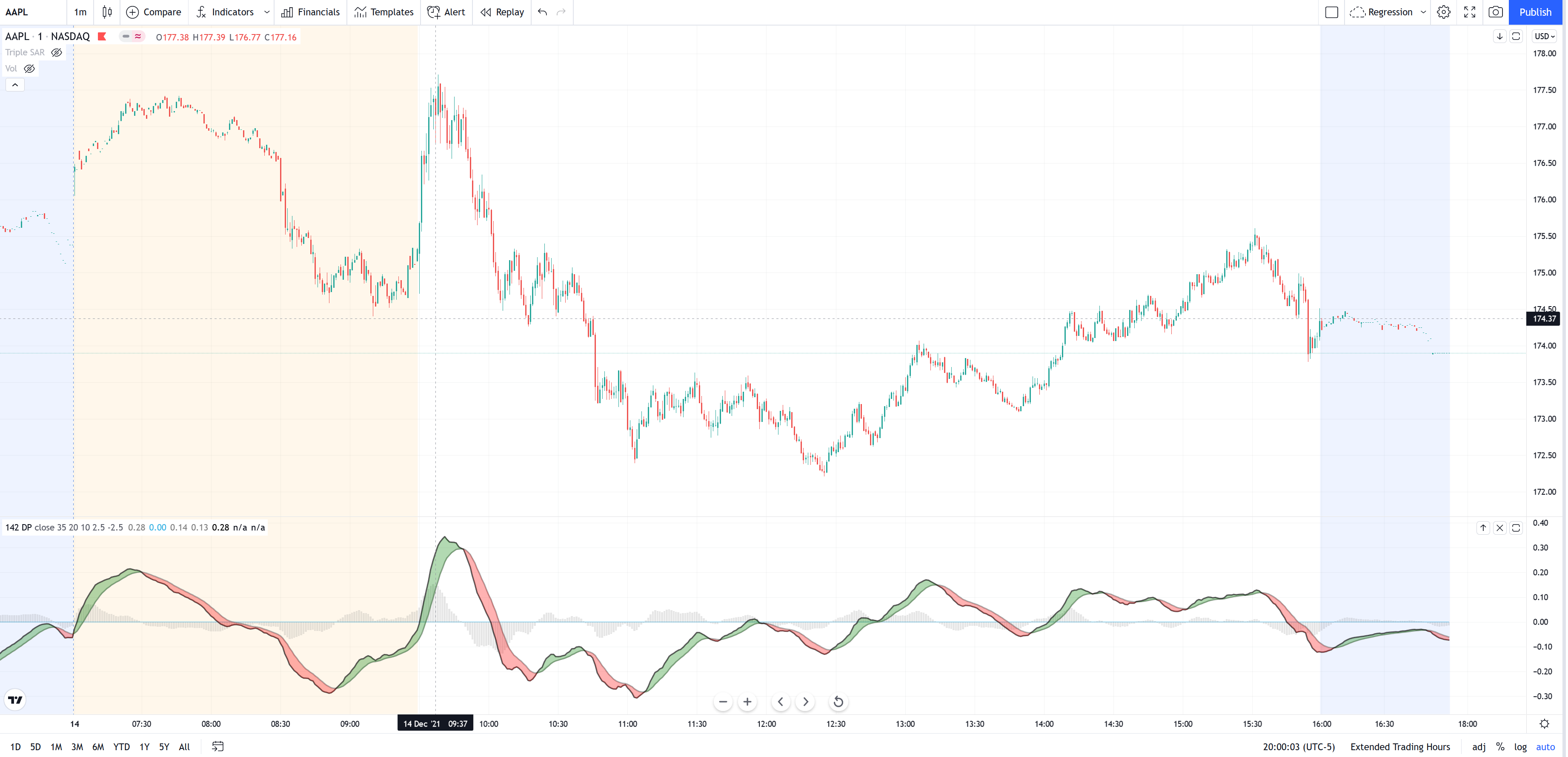142 Decision Point
The DecisionPoint Price Momentum Oscillator is derived by taking a 1-period rate of change and smoothing it with two custom smoothing functions. The custom smoothing functions are very similar to Exponential Moving Averages, but, instead of adding one to the time period setting to create the smoothing multiplier (as in a true EMA), the smoothing functions just use the period by itself.
The PMO oscillates in relation to a zero line. Normally, the PMO direction indicates if strength is increasing or decreasing, while the steepness of the trend angle demonstrates the power behind the move. Since this is an internal ratio calculation (versus external, like the standard relative strength calculation, which divides one price by another price index), it returns a result that is normalized and can be compared to the PMO result of any other security or index. Therefore, chartists can rank a list of securities or indexes in relative strength order simply by using their PMO values. The list does not have to be homogeneous; the PMO can be used to rank market indexes, stocks and mutual funds in the same list.
The PMO also gives hints of important direction changes by forming divergences against the price index. The most reliable signals are generated when the PMO is near the extremes of its normal range, or when a direction change and crossover occurs following a strong, clean, straight PMO move

Figure 14.8: Decision Point